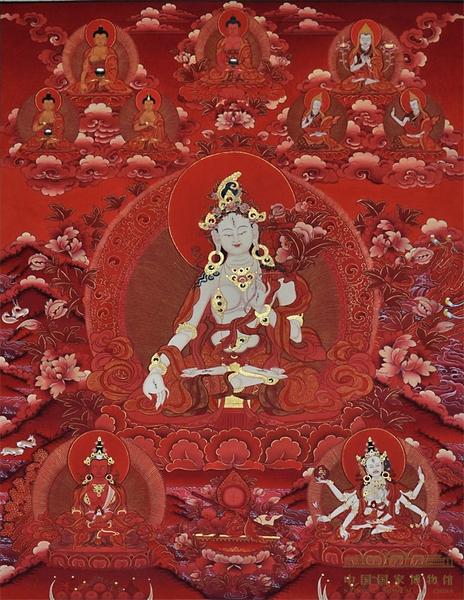
Thangka paintings on display in Beijing. (Photo: CNTV.cn)
Monday unveiled the opening of the 2012 Thangka Art Exhibition at the National Museum of China in Beijing, where more than 100 original Thangka scrolls are on display.
Thangka means "silk, satin or cloth painting scroll."
It's a celebration of centuries-old Tibetan art. More than 100 classic Thangka paintings created by 50 Thangka painters are on display in Beijing. Many locals flocked to the exhibition to enjoy a closer look at the ancient Tibetan art.
Wang Yongcai, deputy director of Tibet Cultural Bureau, said,"Through the exhibition, we want to show Beijingers the art of Thangka paintings, as well as the fruits of protection and inheritance of this ancient art. The quality of the exhibited Thangka paintings are very good. I believe that the visitors will get a deeper understanding of the art of Thangka, its history, development, its painting schools and skills."
Thangka is a Nepalese art form exported to Tibet 13-hundred years ago, when Nepal's princess married the ruler of the high land. The history of the art form in Nepal began in 11th century AD when Buddhists and Hindus began to create illustrations of the deities and the natural landscape.
Realizing the great demand for religious icons in Tibet, artists from Nepal, along with monks and traders, brought a number of Buddhist manuscripts. To keep up with the increasing demand, Nepalese artists created a new type of religious painting on cloth that could be easily rolled up and carried along with them. This type of painting became very popular both in Nepal and Tibet, and thus, the Thangka painting came into being.
Thangka is characterized by a precise, balanced, and lifelike style. The painting methods are mainly bright colors and stencil-like lines. Images are mostly comprised of Buddhas, or depictions of eminent monks and folk customs.
In 2006, Thangka paintings were added to China's National Intangible Cultural Heritage list. Nowadays, there are more than 400 Thangka painters in Tibet, creating hundreds of Thangka scrolls each year.

Copyright ©1999-2011 Chinanews.com. All rights reserved.
Reproduction in whole or in part without permission is prohibited.